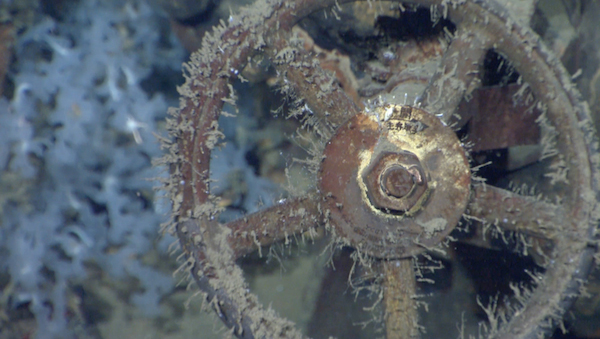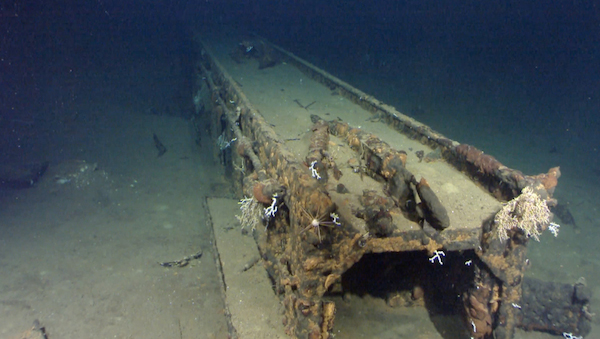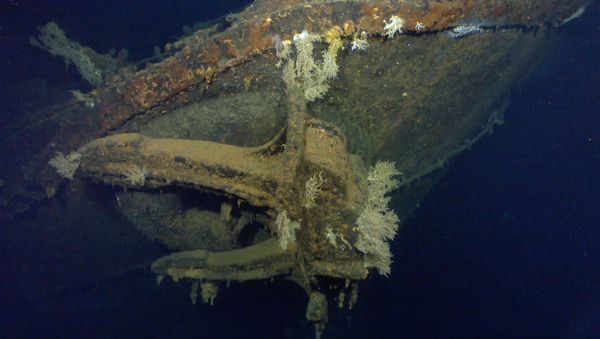M/Y Octopus finds the Musashi
No stranger to using his 126m Lürssen, M/Y Octopus, for rescue, research and archaeological expeditions, Microsoft co-founder Paul Allen has just announced that after eight years of searching, he and his team have located the lost wreck of Japanese battleship Musashi.…
Undeterred by the challenge of locating this piece of naval history, a research team led by Allen combined historical data from four countries with detailed topographical data and the advanced technology on board Octopus to zone in on the exact search area. According to the team, a hypsometric bathymetric survey of the ocean floor mapped the terrain and provided the data that would enable them discount large areas for the search team from the outset. Interestingly, the survey also revealed five completely new geographic features on the floor of the Sibuyan Sea.
The final phase of the search took place in February 2015 using a BlueFin-12 Autonomous Underwater Vehicle (AUV). Owing to the detailed results of the survey narrowing the search area to such specific areas, the AUV was able to detect the wreckage of Musashi on only its third dive. A Remote Operated Vehicle (ROV) with a high-definition camera confirmed the identity of the wreckage as Musashi.
“Since my youth, I have been fascinated with World War II history, inspired by my father’s service in the US Army,” Allen commented after the discovery. “The Musashi is truly an engineering marvel and, as an engineer at heart, I have a deep appreciation for the technology and effort that went into its construction. I am honoured to play a part in finding this key vessel in naval history and honouring the memory of the incredible bravery of the men who served aboard her.”
Commissioned in 1942, the Musashi was the largest battleship in naval history, displacing 72,800 tonnes when fully loaded. It featured 18-inch armour plating and was armed with nine 18-inch guns, the largest ever to be mounted on a warship. Musashi was involved in several battles, including the Battle of the Philippine Sea in June 1944, and was eventually sunk by an estimated 19 torpedoes and 17 bombs from American carrier-based aircraft on 24 October 1944 in the lead up to the Battle of Leyte Gulf. Of Musashi’s 2,399 crewmembers, nearly half lost their lives. To this day among military historians, Musashi and her sister ship, the Yamato, are considered to be incomparable feats of naval architecture and build.
Allen has always been well known for using his 126m Lürssen for more than just private cruising. In the past, Allen has loaned Octopus for a variety of rescue, research and archaeological expeditions. In 2012, for example, Octopus was part of a flotilla searching for an American pilot and two Palau police officers whose plane disappeared, director James Cameron used Octopus for his historic expedition to the Mariana Trench’s lowest point – the Earth’s deepest point – and Allen also loaned the yacht to the Royal Navy to aid them in their attempt to retrieve the bell from HMS Hood, which sank in the Denmark Strait during World War II.
All images are the first images of the wreck captured by the Octo ROV from Octopus. Allen isn't the only owner to use his yacht for unique expeditions. The owners of M/Y Copasetic donated the use of their yacht to a team of scientists researching the genomes of seacreatures that could hold the secret to future treatment of humans. Subscribers can read the full interview with Steven and Valerie Sablotsky in Issue 14 online here.
NEW: Sign up for SuperyachtNewsweek!
Get the latest weekly news, in-depth reports, intelligence, and strategic insights, delivered directly from The Superyacht Group's editors and market analysts.
Stay at the forefront of the superyacht industry with SuperyachtNewsweek
Click here to become part of The Superyacht Group community, and join us in our mission to make this industry accessible to all, and prosperous for the long-term. We are offering access to the superyacht industry’s most comprehensive and longstanding archive of business-critical information, as well as a comprehensive, real-time superyacht fleet database, for just £10 per month, because we are One Industry with One Mission. Sign up here.
NEW: Sign up for
SuperyachtNewsweek!
Get the latest weekly news, in-depth reports, intelligence, and strategic insights, delivered directly from The Superyacht Group's editors and market analysts.
Stay at the forefront of the superyacht industry with SuperyachtNewsweek






